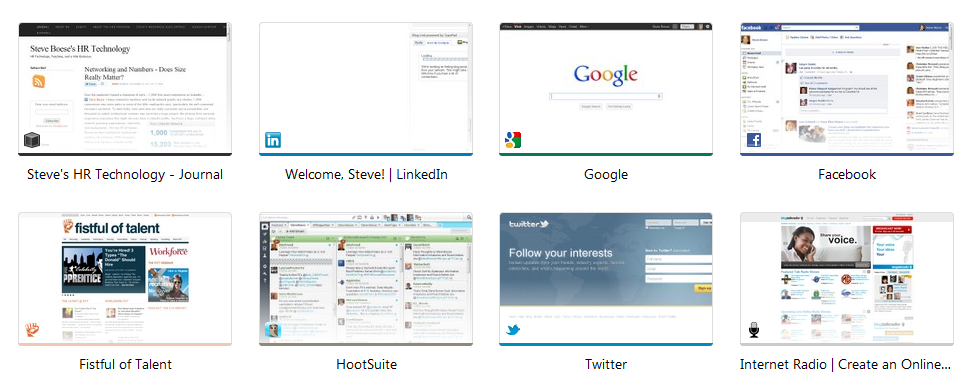Off Topic - Stop me if you think that you've heard this one before
If you are a user of the Google Chrome browser, then you are certainly famiiar with the way Chrome displays your Top 8 'most visited' websites when you click to open a new browser tab. For me, these Top 8 most visited sites, (see image on the right), never seem to change all that much if at all. And I am not sure if that is a good thing quite honestly. Whether it is a list of most frequently visited sites, a familiar and kind of static collection of blogs in a RSS reader, or the tendency many of us have in social media to follow and connect with thousands of people but actually converse with about 20, it is really easy to fall into an information rut, seeing the same kinds of content from the same sources, or as the author Eli Pariser has described it, a filter bubble.
A filter bubble can occur when we either proactively choose to limit the number and diversity of our information sources, or, as is a key feature of the social network Facebook, a system and algorithm determines what content and information it thinks we should see, based on our past preferences and behaviors. But by explicit choice, or more passive acceptance of smart filters, the end result can be, paradoxically, in a networked, connected world of almost unlimited information, that our consumption and exposure to content becomes pretty narrow. We read things we already know, from sources we access every day, and that are shared with us by the same small group of people we know well, (and who, mostly, think like we do).
So here are the questions for today - what do you do to try and ensure you are seeing a wide enough range of viewpoints and sources of information? Do you try and seek out new and different, (perhaps divergent), writers and thinkers to supplement the same five blogs you read every day? How do you seek out people that might disagree with you?
And finally, who is out there doing amazing work that you think the rest of your community might not know about?
Have a Great Weekend!

 Steve
Steve
